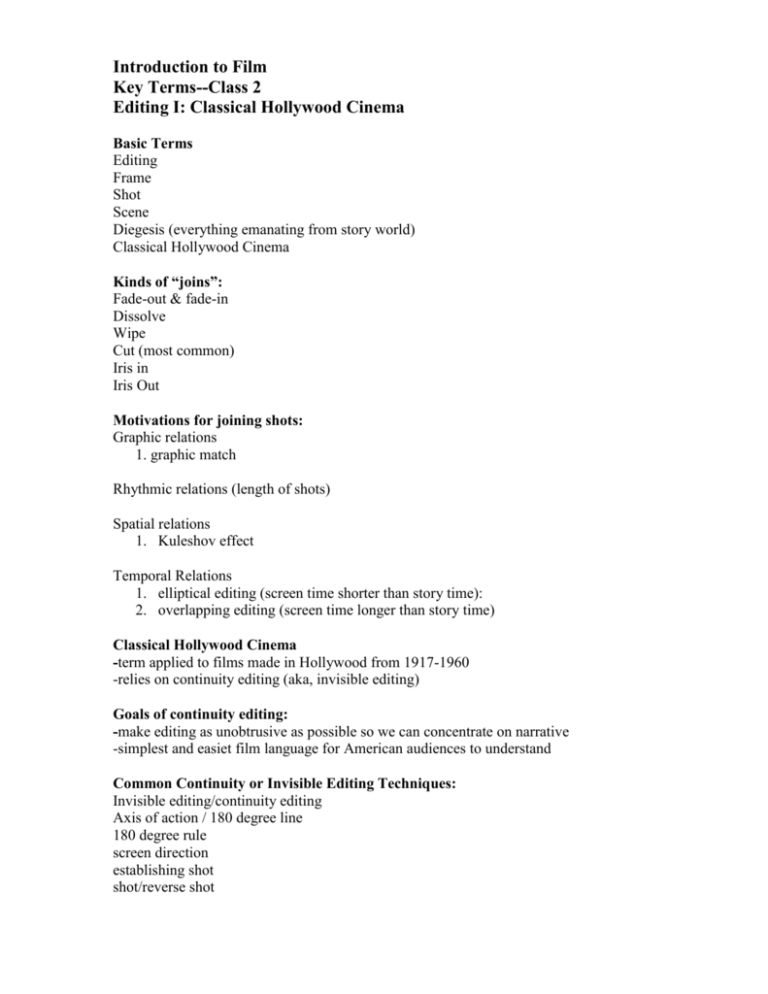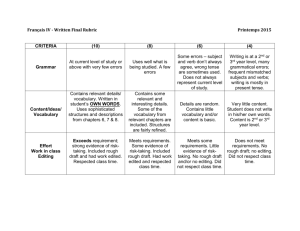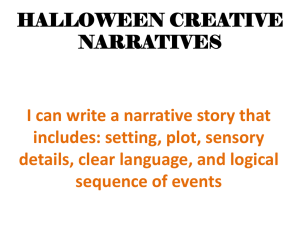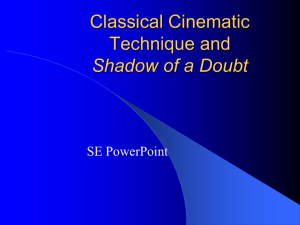Topic 2 Key Terms (CHC Editing)
advertisement

Introduction to Film Key Terms--Class 2 Editing I: Classical Hollywood Cinema Basic Terms Editing Frame Shot Scene Diegesis (everything emanating from story world) Classical Hollywood Cinema Kinds of “joins”: Fade-out & fade-in Dissolve Wipe Cut (most common) Iris in Iris Out Motivations for joining shots: Graphic relations 1. graphic match Rhythmic relations (length of shots) Spatial relations 1. Kuleshov effect Temporal Relations 1. elliptical editing (screen time shorter than story time): 2. overlapping editing (screen time longer than story time) Classical Hollywood Cinema -term applied to films made in Hollywood from 1917-1960 -relies on continuity editing (aka, invisible editing) Goals of continuity editing: -make editing as unobtrusive as possible so we can concentrate on narrative -simplest and easiet film language for American audiences to understand Common Continuity or Invisible Editing Techniques: Invisible editing/continuity editing Axis of action / 180 degree line 180 degree rule screen direction establishing shot shot/reverse shot reestablishing shot eyeline match match on action analytical cutting (ES, S/RS, REES) crosscutting/parallel editing contiguity editing montage sequence CHC Narratives 1. Characters are causal agents 2. Narratives center around defined goal 3. Time is subordinated to plot or cause and effect 4. Motivation will always be strong and clear 5. Conclusion will have closure










